Acquisitions
Jenni Olson Queer Film Collection Joins Holdings of Harvard Film Archive

The Harvard Film Archive has acquired the film and video collection of queer historian, curator and filmmaker Jenni Olson, encompassing both her own works and her trove of moving-image material addressing the LGBTQ experience.
The archive will preserve original camera negatives, prints, and production and distribution files documenting Olson’s thirty-year career as an experimental filmmaker. Highlights include her non-fiction features The Joy of Life (2005) and The Royal Road (2015), which pair landscape shots with reflective voiceovers that mingle personal reflections on lesbian desire and identity with broader historical narratives.
An eclectic mix of 35mm and 16mm features, and ephemera ranging from educational films and home movies to lesbian erotica from the 1940s and hard-to-classify titles like Queens at Heart, a pre-Stonewall documentary/exploitation film composed of candid interviews with trans women, Olson’s personal collection previously served as source material for her compilation films and programs, including Camp for Boys and Girls (1992) and Homo Promo (1993), a compendium of trailers advertising LGBTQ-themed features. Footage from the collection has also been featured in documentaries like Stonewall Uprising (Kate Davis and David Heilbroner, 2010) and I Am Divine (Jeffrey Schwarz, 2013).
Currently undergoing processing, the collection is slated to be made available to researchers in 2021. For more on the acquisition, see here and here.
Papers of John Darling, Documentarian of Balinese Culture, Donated to Australia’s National Film and Sound Archive
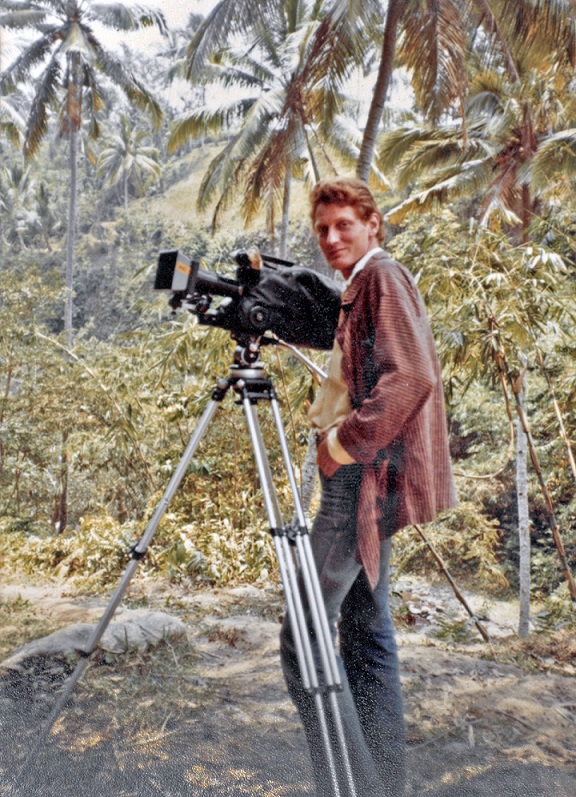
The archives of late Australian filmmaker John Darling (1946-2011), who documented Bali’s social and cultural life over three decades as tourism to the Indonesian island exploded, have a new home at the National Film and Sound Archive of Australia. Beginning with his debut film Lempad of Bali (1978), a portrait of the 116-year old artist I Gusti Nyoman Lempad co-directed by Lorne Blair, Darling delved into Bali’s traditional arts, customs, and religious beliefs, turning to the growing impact of visitors to the island in Bali Hash (1989), which portrayed a rowdy mass gathering of foreigners, and Master of the Shadows (1984), an episode of the television series The Human Face of Indonesia examining how the tourist trade was altering Balinese art. Darling’s final film The Healing of Bali (2003) registered the aftermath of the 2002 bombings by Islamic extremists that killed over two hundred people. Donated by Darling’s spouse Sara, who served as co-producer, production manager, researcher, and still photographer for his documentaries, the collection comprises research notes, production files, and thousands of still photographs. More information on the acquisition is available here.
Preservation
Thought Lost, Universal’s The First Degree (1923) Rediscovered at Chicago Film Archives
The challenging conditions of the novel coronavirus pandemic continue to fuel archival rediscoveries; institutions’ staff have gained additional time to process and inspect their holdings with programming, footage licensing, and other activities largely at a standstill. In June, Olivia Babler of the Chicago Film Archives unearthed a title from Library of Congress’s list of silent features presumed lost: the rural melodrama The First Degree (Edward Sedgwick, 1923), in which two brothers compete for the affections of the same woman, leading the loser to torment his sibling until their conflict culminates in violence. Produced by Universal—the Hollywood studio with the lowest survival rate for its silent productions, as it scrapped its entire collection of silent-era negatives in 1948—The First Degree was rediscovered in the Charles E. Krosse Collection. This cache of mostly educational, agricultural, and sponsored films produced or distributed by the Peoria-based company C.L. Venard Productions and acquired by Krosse (an executive at Caterpillar, Inc., which had commissioned a series of training films from Venard) in the 1980s. The film’s rural setting likely accounts for its inclusion in the collection. The Chicago Film Archives has completed a 4K scan of the film in preparation for future screenings. More information about the discovery is available here, here, and here.
Experimental Documentaries of Cuban Filmmaker Nicolás Guillén Landrián to Be Restored by the State Film Institute that Once Blacklisted Him
In early September, the Instituto Cubano de Arte e Industria Cinematográficos announced its plans to restore the complete filmography of Afro-Cuban cineaste Nicolás Guillén Landrián, who was expelled from ICAIC in 1972—effectively preventing him from working in the island’s film industry—and largely written out of dominant histories of Cuban cinema. Nephew of the prominent poet Nicolás Guillén, Guillén Landrián made creative and sometimes provocative use of montage in documentary films such as En un barrio viejo (In an old neighborhood, 1963) and Coffea arábiga (1968), many of which depicted marginalized Black and rural communities. Branded as eccentric and out of step with the Revolution’s triumphalist discourse, Guillén Landrián’s work was frequently censored. He suffered intense repression by the Cuban state, including multiple stints in prison (he was accused of seeking to leave the island without authorization and later of plotting to assassinate Fidel Castro), mental institutions (where he was diagnosed with schizophrenia and subjected to electroshock therapy), and a forced labor camp. The filmmaker was allowed to leave Cuba for exile in Miami in 1989. An initial reevaluation of Guillén Landrían’s work took place shortly before his death in 2003 with an ICAIC retrospective that influenced a generation of emerging Cuban filmmakers.
Filmmaker Ernesto Daranas, leader of the restoration project, has enlisted the support of Guillén Landrián’s widow Gretel Alfonso and Livio Delgado, the cinematographer for several of his films. For more on the initiative, see here (English version here) and here.
Early LGBTQ Videogame GayBlade Now Playable Online After Original Files Resurface
The pioneering LGBTQ videogame GayBlade (1992), believed to be permanently lost, was recently rediscovered and can now be played via a browser-based emulator hosted by the Internet Archive. Billed as “The World’s First Gay & Lesbian Computer Game” (though this title in fact goes to the 1989 title Caper in the Castro, according to the LGBTQ Game Archive), GayBlade offered an openly political twist on popular fantasy role-playing games. Nicknamed “Dungeons and Drag Queens” by the Village Voice, GayBlade offered players the chance to square off against a series of homophobic right-wing enemies and rescue a captured empress.
The game’s files were thought to have disappeared for good after creator Ryan Best relocated from Honolulu to San Francisco and the shipping company he’d contracted for the move failed to retrieve his belongings from his apartments. Renewed interest in the game, which was featured in the 2018 Rainbow Arcade exhibit on LGBTQ gaming culture and the Netflix documentary series High Score, sparked a search for a copy of its source code, which Best later located in his files.
Visit the LGBTQ Game Archive’s entry on GayBlade for additional information on the game, including a manual, press kit, and newspaper coverage of its release. For more on the rediscovery, see here.
Institutions and Organizations
ABS-CBN Shutters its Film Restoration Program After Political Vendetta Forces the Philippine Broadcaster Off the Air
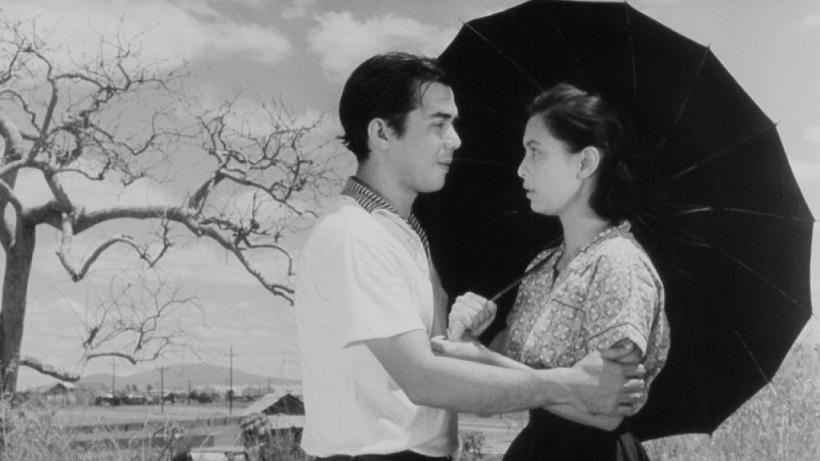
Sagip Pelikula (“Film Rescue”), an initiative of the popular Philippine network ABS-CBN that has restored 185 features since 2011, became collateral damage of a feud between Philippine president Rodrigo Duterte and the network in August. Years of friction between Duterte and the channel, beginning with ABS-CBN’s refusal to air his campaign ads in 2016 and escalating with its coverage of human rights abuses during his violent campaign against drug trafficking, culminated in May when the legislature refused to renew the broadcaster's license, leading to a shutdown of its network channel.
Before the initiative shut down at the end of August, Sagip Pelikula distributed its in-house restorations through network and cable television, DVD releases, and streaming services, successfully monetizing its holdings of over 3,000 titles while increasing the circulation of Philippine film heritage. Although the Film Development Council of the Philippines, which administers the National Film Archive of the Philippines, has offered its assistance, the fate of the restoration division remains uncertain. More information is available here and here.
Rare Indian Film Materials Become Casualties of COVID-19 Lockdown

Strict social distancing measures enacted to combat the spread of COVID-19 in India—the country with the highest number of cases after the United States—have taken a toll on delicate moving-image materials. The negatives of the 1934 film Dhruba, directed by and starring legendary Bengali poet and activist Kazi Nazrul Islam, suffered severe damage when archive technicians were unable to access the reels, held by the Kolkata production company NT1 Studios, for several months.
In Mumbai, the vaults of the Film Heritage Foundation were left without air conditioning and dehumidification when the building’s electricity was shut off for safety reasons. After a month without climate control, conditions in the vault reached 90 degrees Fahrenheit and 65% humidity. Nitrate negatives of production stills from the 1930s deteriorated beyond repair, while a handful of reels from more recent films succumbed to vinegar syndrome. After discovering the damage, the archive’s founder Shivendra Singh Dungarpur defied Mumbai’s lockdown to prevent further damage, visiting the facility daily to perform basic maintenance. For more information, see here and here.
Cinemateca Brasileira Loses Entire Staff After Government Takeover

The existential threat facing the Cinemateca Brasileira, covered in previous editions of this column, intensified this summer after a failed legal bid to force a renewal of the federal government’s contract with the Associação de Comunicação Educativa Roquette Pinto (ACERP), the non-profit to which the Cinemateca’s management had been outsourced, through the end of 2020. The lawsuit, filed by the São Paulo Federal District Attorney’s office in June, was dismissed by a federal court in early August. The recently appointed Secretary of Culture, Mário Frias, made a formal demand for ACERP to surrender the keys of the Cinemateca’s facilities, sending a federal police escort to ensure the transfer. The following day, ACERP fired the Cinemateca’s remaining forty-one employees, whose salaries had gone unpaid since April. While the federal government renewed the contracts of the archive’s security and fire brigade services (outsourced to third-party companies) and announced its plans to rehire staff with funds to be administered by the Sociedade Amigos da Cinemateca, these plans have yet to be concretized as of this writing. For more on the crisis, see here, here, and here.
Grants and Awards
Two Films Thought Lost Among National Film Preservation Foundation Grant Recipients
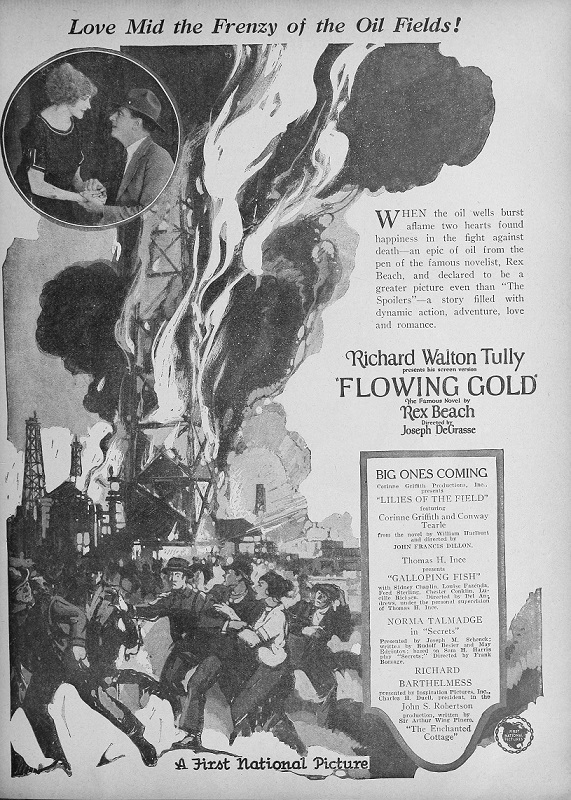
Two films previously thought lost—Black Chariot (Robert L. Goodwin, 1971), a blaxploitation drama centering on a Black Panther-like organization whose funding was crowdsourced from scores of small donors, and the silent melodrama Flowing Gold: The Epic of the Oil Fields (Joseph De Grasse, 1924), which featured star Anna Q. Nilsson diving into a blazing oil fire to save the hero—are among the 47 titles to be preserved with the support of the National Film Preservation Foundation’s 2020 grants. In addition to these rediscovered features, the funding will help safeguard an eclectic mix of works rooted in alternative filmmaking practices, ranging from The Maid of McMillan (1916), which may be the earliest surviving student film, to experimental shorts by female filmmakers Naomi Levine, Dorothy Wiley, JoAnn Elam, and Naomi Uman, along with nature films and amateur and home movies. More information about the grantees is available here and here.
Major Grant from the Andrew W. Mellon Foundation to Fund Integration of Web Archiving and Data Analytics Initiatives
In July, the Andrew W. Mellon Foundation awarded an $800,000 grant in support of a new partnership between the Internet Archive’s web preservation platform Archive-It and the University of Waterloo and York University’s Archives Unleashed initiative, which provides scholars with access and tools to perform large-scale analytics of archived web content. Archive-It enables institutions to download and preserve thousands of webpages while offering the capability to add metadata and provide access to stored content. The grant will support the integration of the two services, making the vast collections accumulated via Archive-It available for data mining. For more on the award and the initiatives, see here and here.
Racquel Gates and Rebecca Prime Named Academy Film Scholars
Two researchers pursuing book-length projects on the history of the African American image will receive grants of $25,000 from the Academy of Motion Picture Arts and Sciences as Academy Film Scholars. Racquel Gates, an associate professor at the College of Staten Island, CUNY and the author of Double Negative: The Black Image and Popular Culture (Duke University Press, 2018), won the grant for her manuscript-in-progress “Hollywood Style and the Invention of Blackness,” which explores how formal strategies for representing Blackness in classical Hollywood cinema solidified into a visual repertoire that shapes images of African Americans today. A second award went to Rebecca Prime, editor of Film Quarterly, for her project Uptight! Race, Revolution, and the Struggle to Make the Most Dangerous Film of 1968. The first Hollywood feature to grapple with the Black Power movement, Uptight! was directed by émigré filmmaker Jules Dassin, a key figure in Prime’s award-winning book Hollywood Exiles: The Blacklist and Cold War Film Culture (Rutgers University Press, 2014). More information is available here.
Online Resources
Locarno International Film Festival Offers Classic Films to VOD Distributors via New Heritage Online Platform
With the novel coronavirus pandemic hindering new film production as well as the distribution deals made in person on the festival circuit, the Locarno International Film Festival has launched Heritage Online, a database and virtual screening room of pre-2005 feature films available for digital distribution from archives and other rightsholders. Video-on-demand providers can access the catalogue and preview titles free of charge as they consider acquiring distribution rights; rightsholders pay a subscription fee of 85 CHF (Swiss francs) to list their holdings, with the cost rising if they wish to make titles available for streaming through the platform. These fees are waived for releases that originally screened at Locarno, among them, Edward Yang’s The Terrorizers (Taiwan, 1987) and The Girl and the Echo (Arūnas Žebriūnas, 1965), one of five recently restored Lithuanian films hosted by Heritage Online, are currently streaming through the platform. While the portal is not available to the general public, other film professionals may pay the basic subscription fee for access.
For more information on Heritage Online, see here and here; a roundtable on the portal, held during the virtual edition of the festival in August, can be viewed here.
Raw Footage, Paper Archives of Guerilla Television Collective Top Value Television Now Available Virtually

Over two hundred hours of raw footage and more than six thousand pages of documents generated by the activities of Top Value Television (TVTV), a group of media activists inspired to reimagine television reporting by the introduction of lightweight camcorders like the Sony Portapak, are now freely available online from the Berkeley Art Museum and Pacific Film Archive.
With support from the National Endowment for the Humanities, BAM/PFA digitized TVTV’s paper archives and 437 open-reel tapes shot in the production of its freewheeling broadcast documentaries The World’s Largest Television Studio (1972), Four More Years (1972)—on the Democratic and Republican National Conventions, respectively—and Gerald Ford’s America (1975), shot in the wake of Richard Nixon’s resignation. In addition to this previously unseen footage, production files, publicity materials, press clippings, and correspondence provide a behind-the-scenes look at the collective’s activities.
The site also features essays on TVTV, interviews with several of the group’s members, and a guide to additional online resources, including the collective’s streaming site, where eight of its programs can be rented or purchased, and an online repository of the magazine Radical Software (1970-1974) dedicated to guerilla video and video art.
Two New Online Portals Pay Tribute to the Cinema and Activism of Filmmaker William Greaves
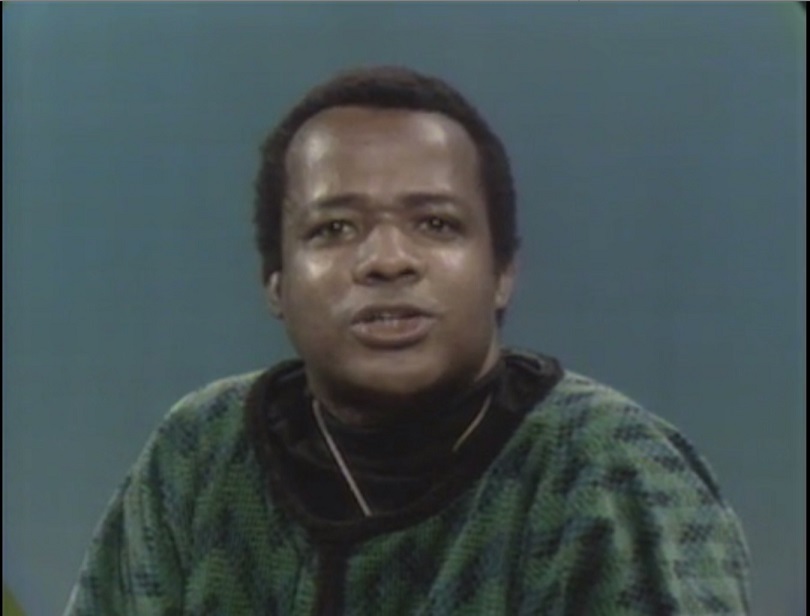
An online guide to the career of William Greaves (1926-2014), which encompassed five decades and nearly eighty films largely focused on the Black experience, made its debut in September. Beginning his career as a songwriter and actor in some of the last independent Black-cast “race films,” Greaves trained at the National Film Board of Canada’s Unit B, an early locus of the cinema verité movement, after facing racial barriers to a directing career in the United States. Working largely in educational film and public television, Greaves also directed the experimental verité features Symbiopsychotaxiplasm Take One (1971) and Symbiopsychotaxiplasm Take 2 ½ (2005). The new website offers an overview of Greaves’s career, a full filmography with entries on key films, interviews with the filmmaker, and a guide to streaming and DVD access to his works, among other features.
Greaves’ work also features prominently in a new online exhibit from the American Archive of Public Broadcasting exploring how the Black Power movement shaped public affairs programming in the late sixties and early seventies. Curated by Christine Acham, Professor at the University of Hawai’i at Mānoa and Ashley Young, a Ph.D. candidate at the University of Southern California, the exhibit features Greaves’s Still a Brother: Inside the Negro Middle Class (1968) alongside a series of late-sixties specials on race relations. The exhibit’s centerpiece is a run of nearly seventy episodes of Black Journal, the first nationally syndicated public affairs program focused on the Black community, which Greaves produced after the show’s African American staff went to strike to demand greater editorial control in 1968. Under Greaves’s leadership, Black Journal cultivated a space for African American audiences while offering a nuanced take on Black political activism ofte missing from mainstream media.
Restored Features by José Bohr, Globetrotting Pioneer of Popular Cinema, Now Streaming from Chile’s Cineteca Nacional
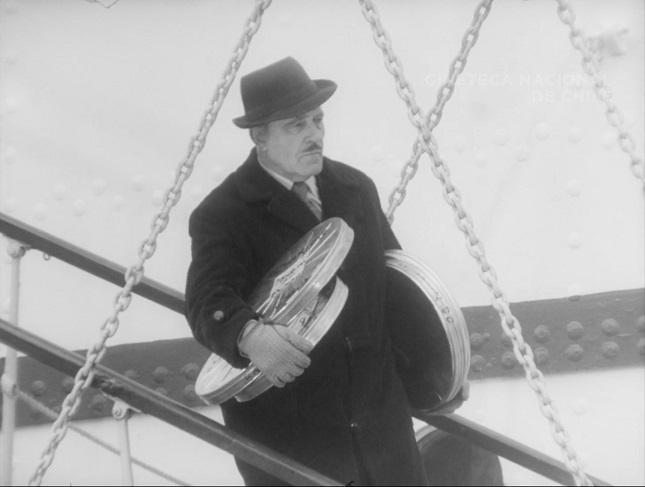
Nine of the twenty-one Chilean features directed by the itinerant and multitalented José Bohr—a German-born singer, composer, actor, and filmmaker who participated in the cinemas of Argentina, Chile, Mexico and the United States—are now freely available online from the Cineteca Nacional de Chile. Restored between 2018 and 2020 in collaboration with the Fundación Chilena de las Imágenes en Movimiento and the government’s Programa de Apoyo al Patrimonio Audiovisual, the online collection highlights the blend of humor, melodrama, and popular song that marks Bohr’s Chilean filmography. Titles range from hit comedies like P’al otro lao (To the other side, 1942), in which a domestic servant (Ana González) is poised to inherit her late employer’s fortune—but only if she marries within two weeks—and the meta-cinematic La dama de las camelias (The lady of the camellias, 1947), in which González plays an amateur actress cast in a rushed adaptation of Dumas’s novel, to two releases featuring the character of circus owner Euríspedes Chamorro: the popular El gran circo Chamorro (The great Chamorro circus, 1955) and Bohr’s final film Sonrisas de Chile (Smiles of Chiles, 1970), which followed the now-middle-aged character on a trip through Chile punctuated with songs and sketches.
Access the collection of films here; watch a panel discussion about the restorations (in Spanish) here; learn more about the initiative here.
Small-Gauge Filmmaking Technologies On Display in New Virtual Exhibit
A sampling of small-gauge filmmaking equipment drawn from a collection of over two hundred cameras and fifty projectors amassed by archivist Alan Lewis and donated to Indiana University Libraries Moving Image Archive in 2017 can now be viewed in an online exhibit. In addition to still images of the equipment, the site hosts digitized versions of manuals, advertisements, and even sound recordings of several camera's motors. Organized by manufacturer, the exhibit also chronicles how cameras developed by key companies such as Bell & Howell and Kodak fueled amateur and documentary filmmaking practices.
Media History Digital Library Digitizes United Artists Pressbooks Spanning Four Decades
One hundred pressbooks created to promote United Artists releases from the collection of the Wisconsin Center for Film & Theater Research can now be accessed virtually via the Media History Digital Library, thanks to support from the Center and the Mary Pickford Foundation. Containing publicity images, suggestions for promotional events, and even prewritten copy to be published as reviews in local newspapers, these booklets offer a glimpse into how feature films were marketed to audiences. The collection features pressbooks for many of the most iconic (and notorious) titles released by the studio founded by Mary Pickford, Douglas Fairbanks, Charlie Chaplin, and D.W. Griffith, including Griffith’s Broken Blossoms (1919), Chaplin’s City Lights (1931) and Modern Times (1936), King Vidor’s Stella Dallas (1937) and Alfred Hitchcock’s Spellbound (1945). A finding aid to the full collection of pressbooks held by the Center is available here.
Recordings from Public Broadcasting Pioneer WHA Debut on University of Wisconsin-Madison Libraries Website

The sounds of WHA, one of the oldest US radio stations still on the air today, can be heard once again on the website of the University of Wisconsin-Madison Libraries thanks to a grant from the Council on Library and Information Resources’ Recordings at Risk program. Originating in experiments in the University of Wisconsin-Madison’s physics department, WHA, which began broadcasting in 1917 with the call letters 9XM, later gave rise to Wisconsin Public Radio. During the twenties, thirties, and forties, the station served as a key vehicle for university extension efforts intended to inform and educate its largely rural audience. Offering a window into the experiences and concerns of these listeners, the WHA collection includes selections from WHA’s Farm Program and Homemaker Program, as well as the 4-H Club of the Air and “Wisconsin Yarns,” a program dedicated to regional folklore by the Wisconsin College of the Air, which used radio as a means of distance education.
Listen to the thirty-nine digitized programs here and learn more about the initiative here. For more on the station’s history, see a virtual exhibit hosted by the Wisconsin Center for Film & Theater Research. A finding aid for the full WHA archives at the University of Wisconsin-Madison Libraries, which encompasses over 7,000 recordings, can be accessed here.
“Archival News” reports on recent news highlights from the media archive community for the Journal of Cinema and Media Studies readership. Some information in this column comes courtesy of the Association of Moving Image Archivists (AMIA) listserv, along with institutional newsletters, websites, and press releases. This column is updated quarterly. Contributions to this column are welcomed. Information should be sent to Rielle Navitski, Theatre and Film Studies, University of Georgia, Fine Arts Building, Athens, GA, 30602-3154, email: [email protected]. For news and finds from online media archives, follow @archivalnews on Twitter and Instagram.









